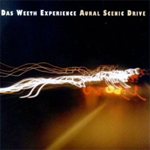This review page is supported in part by the sponsors whose ad banners are displayed below |
 |
 |
Which gets us to tonality. There I eventually determined a very subliminal ‘voicing’ if you will. I’m talking recording studio neutrality though let's be clear a studio isn’t a studio isn’t a studio when many audiophile productions these days deliberately chill out the treble to achieve a certain silkiness to their sound. Not Ampollo. On anything harmonically fiery like cymbals and hi-hats, there always was energetic presence with hissing sparks full of piss and vinegar but it also was clean and precise.
|
 |
If forced to decide whether to call the Abacus treble slightly soft or more crisp, I’d go for the latter. I also juxtaposed Ampollo directly against my yeoman work amp, the rhythmically controlled Myryad MXA2150. Two items stood out. The Myryad seemed to impose a minor emphasis on low and mid bass—or perhaps it was simply greater shove—where the Ampollo felt perfectly even. Though I happily confess to a penchant for a minimal dose of extra bass displacement, the Abacus didn’t leave me shortchanged.
|
|
|
|
 |
Both amps handled the vocal range on the same plateau, i.e. nuanced and balanced whilst in the treble the Ampollo had the keener resolution. This became very apparent on "Back with a Lie" by Das Weeth Experience and their Annual Service Drive. Whilst holding down a straight 4:4 beat, the drummer gets fancy by accentuating the main beats with one of three widely spaced ride cymbals to introduce a tonal 3 vs. 4 counter current. Where Ampollo identified these different cymbals clearly by their individual overtone distributions, the Myryad required more of an effort to distinguish that they didn’t merely alternate location left, right and middle but also traded sonic fingerprints.
|
|
|
 |
Matched evenly on microdynamic talent, Ampollo had somewhat greater reserves for macro swings. On ultra-steep impulses and the large voltage differentials which not only complex classical imposes but electronica like Yello’s "Daily Disco", the Abacus had more speed and directness than the Brit which I'd already rank as particularly apt with angular stuff. In short, the Abacus Ampollo mightily impressed. This brilliantly built power house goes from soft to hard a nails on a dime, excels at soundstaging precision and masters the stretch between high-resolution detail and involving musicality. Once price enters it turns into a veritable insider’s tip. It sounds a lot more expensive than it is.
|
|
|
Psych profile:
- Tonally neutral and even across the board, the treble leans toward the lit up and expansive.
- Noteworthy is the sheer speed which translates into high micro- and macrodynamic reflexes.
- Soundstaging is well above average, with a very broad but realistic panorama and precise three-dimensional image specificity.
- The sonic presentation is characterized by a successful merger of precision and musicality.
|
Facts:
- Concept: Integrated power amp
- Inputs: RCA, XLR combo 6.3mm
- Outputs: Biwire terminals
- Standby/idle: 0.5 and 30wpc respectively
- Power stereo/mono into 8Ω :2 x 105w, 1 x 420w
- Dimensions (WxDxH): 435 x 350 x110mm
- Weight: ca. 12kg
- Other: Also mono or biwire mode, signal-sensing mode, 10-day home trial option
- Website
|
|
redaktion @ fairaudio.de
|
 |
 |
 |